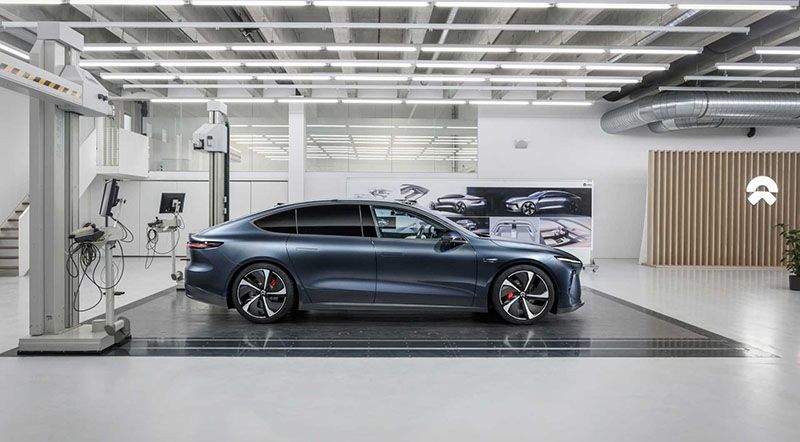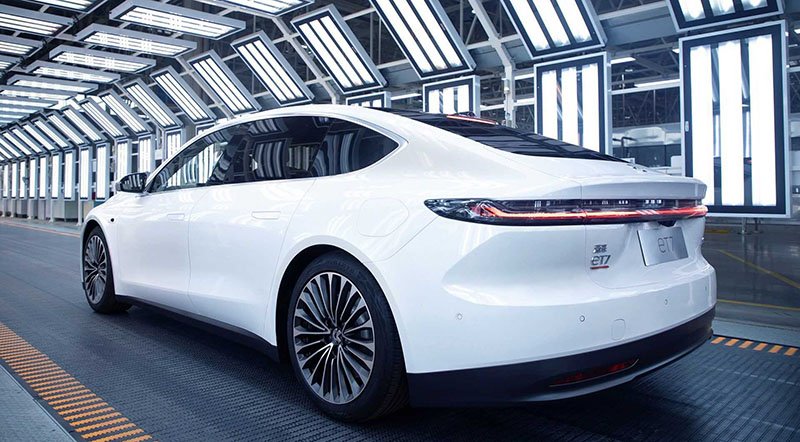The Chinese electric carmaker NIO has released the drag coefficient figure for its upcoming ET7 flagship sedan, and it comes to be the same as the Tesla Model S. Both the electric sedans achieve a 0.208 drag coefficient.
The best in this regard is the Mercedes-Benz EQS 450+ with a 0.200 drag coefficient. On the other hand, the EQS 580 4MATIC attains 0.209, while the Lucid Air comes at 0.21.
NIO was first estimated to develop ET7 with a 0.23 drag coefficient, but after more than 800 CFD simulation instances and 120 hours of wind tunnel examinations concluded, the engineers managed to bump the level close to top performers.
“The aerodynamics team of NIO has been deeply engaged in the design and engineering of the ET7 since the very beginning. With ergonomics and cabin comfort uncompromised, the ET7’s front windshield inclination angle, radii and angles between the headlights and the front fenders, fastback design and ducktail spoiler, C pillar character lines, approach and departure angles, and wheels are optimized to make the model more aerodynamic.”

“In the meantime, the Watchtower sensor layout on the roof, on the one hand, enables a more commanding view of the ultralong-range high-resolution LiDAR and 8-megapixel high-resolution cameras, and redefines the exterior design in the autonomous driving era, yet, on the other hand, it also poses a huge challenge to the vehicle’s aero efficiency. The aerodynamics team has spared no effort in perfecting the inclination and radii of the LiDAR and cameras and excelling its aerodynamic performance.”
“Apart from that, the active grille shutter(AGS) and air suspension that come standard on the ET7, and the light-weight underbody coverage further boost the aerodynamic performance of the vehicle, making a perfect combination of aesthetics and aerodynamics. ”

For electric carmakers, aerodynamics is one area that requires more prudence and refinement because it precisely affects the driving range. With this drag coefficient, NIO believes the forthcoming 150 kWh battery option (by the end of 2022) will let the ET7 deliver over 1,000 km (622 miles) on NEDC.
In the meantime, the pre-production versions of the NIO ET7 has lately finished the extreme heat examinations in Sanya of Hainan, Turpan of Xinjiang, and Chongqing in China.
“In these tests, engineers fully verified the stability of the NIO ET7’s thermal management system, performance of the powertrain system, and the battery cooling system under extreme heat conditions by testing the stability of vehicle performance in temperature changes and AC performance after exposure to the sun.”
These trials accompany the winter examinations done slightly earlier in New Zealand. NIO is all set to debut the ET7 in the first quarter of next year in China. The launch for other markets like Europe will probably happen before the end of 2022.
Source and Image: InsideEvs
